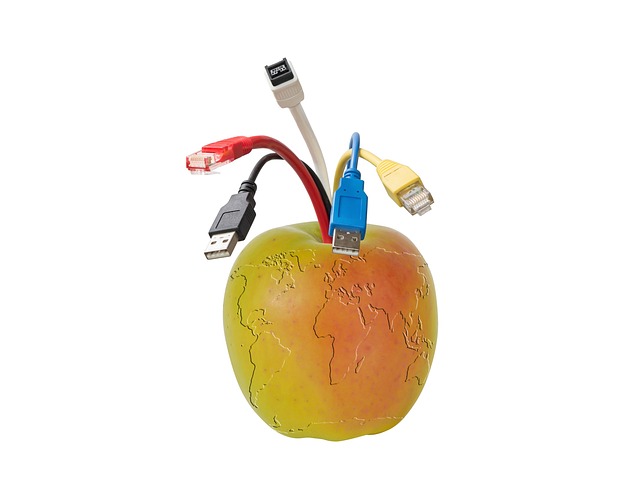Over-the-Air (OTA) updates transform device management with wireless tv app and software updates, optimizing timing based on network traffic, device usage, and battery levels to avoid disruptions. Wireless security patches with OTA updates ensure timely bug fixes and security measures against emerging threats, convenient for service providers and users. Implementing Select Over-the-Air Updates (OTAs) reduces manual intervention, benefiting smart home devices and iOS set-top boxes. Timely, tested, and secure network broadcast software refreshes are crucial for addressing vulnerabilities promptly. Companies like Apple and Samsung have successfully adopted OTA updates, fostering customer trust and device longevity. Integrating satellite TV software refreshes into OTA frameworks enhances security across platforms.
Wireless security patches, delivered via Over-the-Air (OTA) updates, are essential for safeguarding connected devices. This comprehensive guide explores the transformative power of OTA updates, from enhancing device security to streamlining deployment processes. We delve into the benefits, challenges, and best practices surrounding these updates, offering valuable insights through case studies. Additionally, we glimpse into the future, highlighting emerging trends in wireless security that promise to revolutionize protection for IoT devices.
- Understanding Over-the-Air Updates
- Benefits of Wireless Security Patches
- Challenges in Implementing OTA Updates
- Best Practices for Secure Updates
- Case Studies: Successful OTA Deployments
- Future Trends in Wireless Security Updates
Understanding Over-the-Air Updates

Over-the-Air (OTA) Updates have become a cornerstone of modern device management. This convenient method allows wireless tv app updates and software upgrades to be distributed directly to compatible devices, eliminating the need for physical connections or manual interventions. By enabling OTA updates, manufacturers ensure that users receive the latest security patches and feature enhancements promptly.
Choosing the best time for air updates is crucial for a seamless experience. Consider network traffic patterns, device usage, and battery levels to optimize airtime for software upgrades. For instance, updating during off-peak hours or when the device is idle can minimize disruptions and prolong battery life, ensuring that users benefit from enhanced security and performance without compromising their daily activities.
Benefits of Wireless Security Patches

Wireless security patches offer numerous advantages when it comes to keeping your devices and data safe in today’s connected world. One of the key benefits is the ability to implement security updates remotely, often through Over-the-Air (OTA) updates. This innovative feature eliminates the need for manual interventions, ensuring that all connected devices receive critical security enhancements simultaneously. By enabling OTA updates, users can forget about the hassle of cable TV firmware overhauls or waiting for physical software downloads, like those offered by AT&T Uverse.
These patches are a game-changer in terms of convenience and efficiency. They allow service providers to distribute bug fixes and security measures instantly, addressing potential vulnerabilities before they can be exploited. Whether it’s during peak hours or the best time for air updates, these automated processes ensure that every device running on wireless networks is up-to-date and protected against emerging threats.
Challenges in Implementing OTA Updates

Implementing Over-the-Air (OTA) updates for wireless security patches presents several challenges, particularly in the context of smart TVs and Android box OS devices. One of the primary hurdles is ensuring reliable and consistent connectivity, as intermittent or unstable network connections can disrupt or fail to complete the update process. This is especially problematic in environments with limited or poor signal strength, such as remote areas or homes with thick walls.
Moreover, the compatibility and integration of OTA updates into existing hardware and software systems can be complex. Smart TVs and Android box OS devices often have diverse hardware configurations and varied operating system versions, necessitating tailored update mechanisms. Additionally, securing the OTA update process itself is crucial to prevent malicious code injection or unauthorized access, requiring robust encryption and authentication protocols. These challenges underscore the importance of carefully designed and robust OTA update systems for maintaining the security and integrity of wireless devices.
Best Practices for Secure Updates

Maintaining wireless security involves more than just installing a patch; it’s about adopting best practices for secure updates. One effective strategy is to Select Over-the-Air Updates (OTAs), which allow for remote deployment of software updates, reducing manual intervention and potential human error. This method is especially beneficial for smart home device over-the-air updates and iOS set-top box upgrades. By enabling OTA updates, manufacturers can ensure that devices across vast networks receive the latest security patches promptly, mitigating vulnerabilities before they can be exploited.
Moreover, network broadcast software refreshes should be designed with security in mind. These automated updates must employ secure communication protocols to protect data integrity and prevent unauthorized access during the update process. Regularly scheduled and tested updates are crucial for keeping devices secure, as they address emerging threats promptly, fostering a robust wireless security environment.
Case Studies: Successful OTA Deployments

In the realm of modern technology, Over-the-Air (OTA) deployments have emerged as a game-changer for wireless device firmware syncs. Successful case studies demonstrate that OTA updates offer a seamless and efficient method to patch security vulnerabilities in various devices. For instance, leading tech companies like Apple and Samsung have successfully implemented OTA updates, ensuring their users receive the latest security patches promptly. This approach not only enhances the overall security posture but also simplifies the process for both manufacturers and end-users alike.
These case studies highlight best practices for executing air updates, such as identifying the optimal time for these updates to minimize disruption in user experiences. Timing is crucial—a well-planned schedule ensures that users receive patches during periods of low network congestion, avoiding potential delays or dropouts during critical tasks. By adopting these over-the-air tv update tips, manufacturers can create a reliable and secure environment for their customers, fostering trust and ensuring the longevity of their devices.
Future Trends in Wireless Security Updates

As technology advances, wireless security updates are becoming increasingly dynamic and efficient. One of the future trends gaining traction is Over-the-Air Updates (OTA), which allows for remote and automatic firmware refreshes on devices like streaming devices and TV boxes. This method significantly streamlines the update process, eliminating the need for manual intervention from users or service providers. OTA updates ensure that devices receive the latest security patches promptly, enhancing protection against emerging threats in real-time.
Moreover, the integration of satellite TV software refreshes into this OTA framework holds promise for enhanced security across various platforms. Regular TV box firmware upgrades through OTA can mitigate vulnerabilities and improve overall system stability, benefiting users with seamless streaming experiences. This trend points towards a more interconnected and secure ecosystem, where devices communicate and update seamlessly to counter evolving cyber challenges.
Wireless security patches, facilitated by Over-the-Air (OTA) updates, are essential for maintaining robust network security. By understanding the benefits and challenges of OTA updates, implementing best practices, and learning from successful case studies, organizations can ensure their wireless systems remain protected against evolving threats. As technology advances, staying ahead of security trends will be crucial to safeguard digital assets and protect sensitive data in the future. Adopting OTA updates is a strategic step towards achieving this goal, enabling efficient and secure system enhancements.
